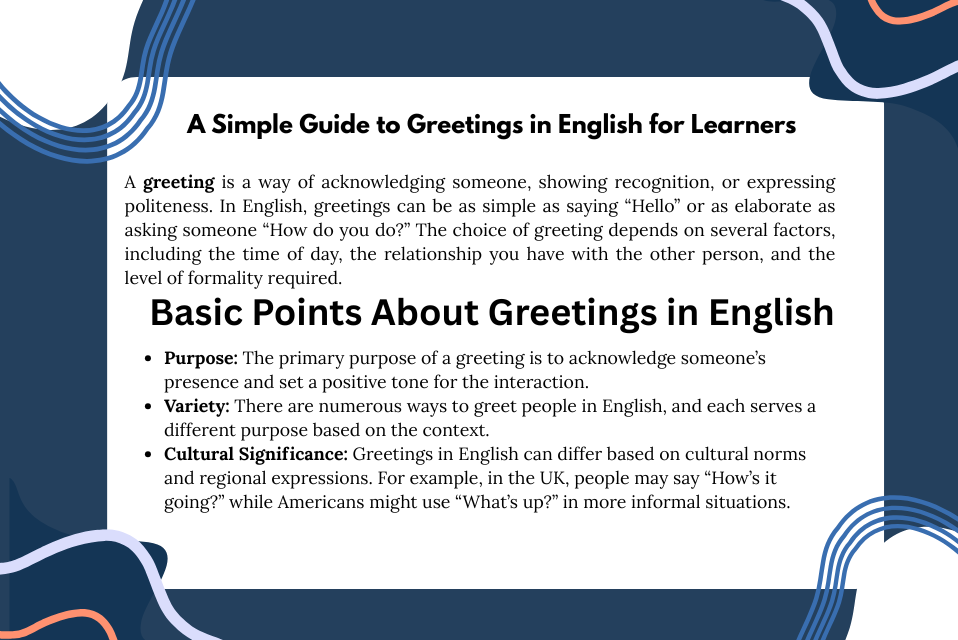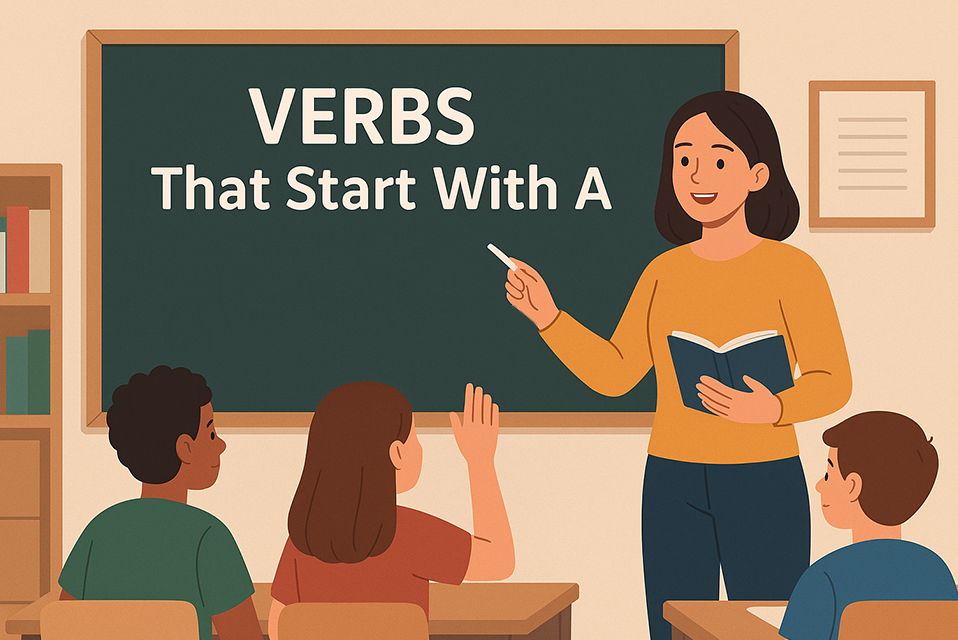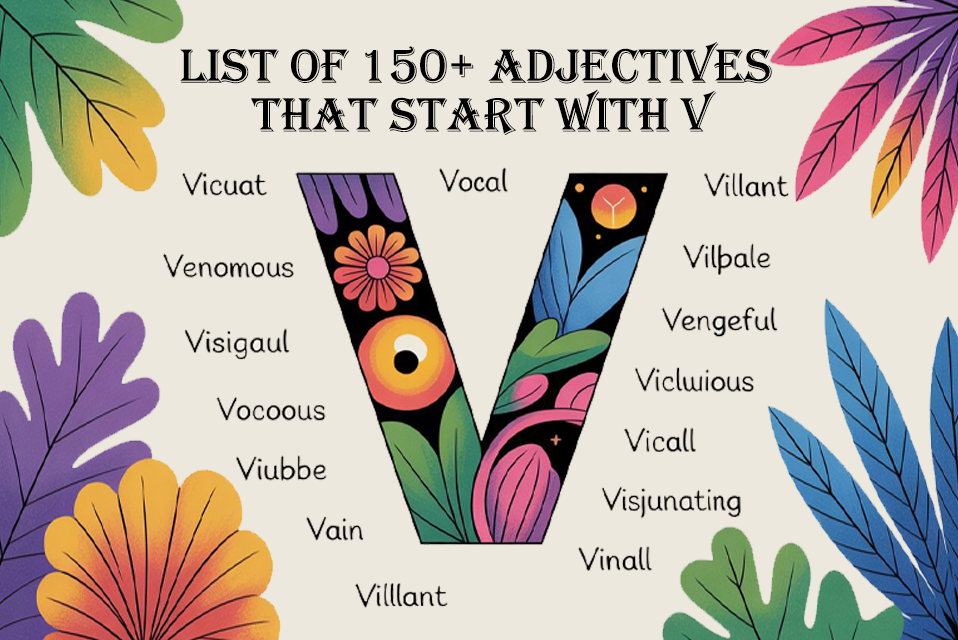Greetings are the first step in communication. They set the tone of a conversation, build connections, and reflect respect and politeness. Learning greetings in English is essential for students, travelers, professionals, and anyone who wants to communicate confidently. This article explores common greetings in English, their types, and how to use them in everyday life, from formal greetings in English to casual greetings with friends. To practice further, learners can also explore useful grammar topics such as modal verbs, including a list of 50 sentence of should, which helps in understanding how to give advice or express obligation while using greetings in real conversations.
Why Are Greetings Important?
The way we greet others shows politeness, warmth, and social awareness. Greetings and introductions in English are often the first impression people get from us. Whether you are writing a greeting sentence in English or starting a conversation, the right words can make communication smoother.
Common Greetings in English
Here are some everyday greetings in English that are widely used:
- Hello
- Hi
- Hey
- Good morning
- Good afternoon
- Good evening
- How are you?
- Nice to meet you
Types of Greetings in English
1. Formal Greetings in English
Formal greetings are polite and respectful, often used in professional or academic settings. Examples include:
- Good morning, how are you today?
- It’s a pleasure to meet you.
- How do you do?
- Good evening, ladies and gentlemen.
2. Informal Greetings in English
Informal greetings are friendly and casual. They are used with family, friends, or close colleagues:
- Hi there!
- What’s up?
- Hey, how’s it going?
- Yo!
3. Everyday Greetings and Responses
Daily life requires simple yet warm greetings. Here are some examples:
- Good morning greeting in English: “Good morning, have a nice day.”
- Good night greeting in English: “Good night, sleep well.”
- Greeting words for daily use: Hi, Hello, Bye, See you, Take care.
- English greetings and responses:
- Greeting: “Hello, how are you?”
- Response: “I’m fine, thank you. And you?”
4. Professional and Business Greetings
In the workplace, greetings must be respectful and professional. Examples:
- Good morning, everyone.
- It’s nice to see you again.
- Thank you for joining today’s meeting.
5. Greetings for Special Contexts
- Greetings for teachers in English: “Good morning, respected teacher.”
- Greetings for students in English: “Hello students, welcome to class.”
- Warm greetings in English: “I hope you’re having a wonderful day.”
- Funny greetings in English: “What’s cooking, good looking?”
- Slang greetings in English: “Yo, dude!” or “Sup?”
Learn more: 50 sentences of should
Dialogue Using Greetings in English
Here’s a greetings conversation in English to show real use:
A: Good morning, how are you today?
B: I’m fine, thank you. And you?
A: I’m doing well. Nice to see you again.
B: Nice to see you too.
Short Greetings in English
Sometimes, just one word is enough. Here are some short greetings in English:
- Hi!
- Hey!
- Hello!
- Morning!
- Bye!
- See ya!
Greeting Vocabulary in English
To expand your knowledge, here’s a list of useful greeting words in English for daily use:
- Hello
- Hi
- Hey
- Greetings
- Welcome
- Howdy
- Cheers
- Good day
Formal vs Informal Greetings
Understanding the difference between formal vs informal greetings is key.
- Formal: “Good afternoon, Mr. Smith.”
- Informal: “Hey John, what’s up?”
Greeting Sentences in English
Here are some greeting sentences in English you can practice:
- “Hello, my name is Sarah. Nice to meet you.”
- “Good evening, I hope you’re doing well.”
- “Hi, how’s everything going?”
- “Hey, long time no see!”
Short Essay on Greetings in English
Greetings in English play a very important role in daily communication. They are the first words we say when meeting someone and they show respect, kindness, and friendliness. A simple “Hello” or “Good morning” can create a positive atmosphere and make people feel welcome.
There are many types of greetings in English, and they are used in different situations. For example, formal greetings in English such as “Good afternoon, how are you?” are suitable for professional settings like offices, schools, or meetings. On the other hand, informal greetings in English such as “Hey, what’s up?” or “Hi there!” are common with friends and family.
In daily life, people use greeting phrases in English like “Good night,” “See you later,” or “Take care.” These short greetings in English make conversations friendly and smooth. Students greet their teachers by saying, “Good morning, respected teacher,” while teachers may greet their students with “Hello students, welcome to class.” Such polite exchanges create respect and harmony, and learners can also notice how greetings may vary in strength just like adjectives do in grammar, where we study Weak Comparative and Superlative forms to express degrees of politeness or warmth in communication.
Conclusion:
Greetings in English are not just words but social tools that connect people. From formal greetings in English used in workplaces to friendly greetings in English with loved ones, they reflect respect, warmth, and culture. Practice these greeting phrases in English, learn the difference between formal and informal greetings, and try using them in greetings conversations in English. With these, you’ll master the art of communication.
FAQS: A Simple Guide to Greetings in English
1. What is a greeting in English?
A greeting is a word or phrase used to acknowledge someone’s presence, begin a conversation, or show politeness. Common examples include “Hello,” “Hi,” and “Good morning.”
2. What are the most common English greetings?
Some of the most common greetings are:
Hello (neutral)
Hi (informal)
Good morning/afternoon/evening (formal)
Hey (very informal)
3. When should I use “Good morning,” “Good afternoon,” or “Good evening”?
Good morning: Before 12 PM
Good afternoon: 12 PM to 5 PM
Good evening: After 5 PM
These are generally used in more formal or polite settings.







